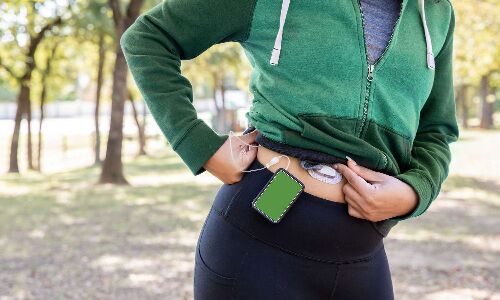
Canada: In adults and adolescents with type 1 diabetes, assisted insulin delivery (AID) systems improved nocturnal glycemic management in post-exercise settings compared to usual care, as shown in research published in Diabetes Technology & Therapeutics.
The findings showed dual-hormone (DH)-algorithm-assisted insulin delivery (AID) to be better than single-hormone (SH)-AID in adults but not adolescents.
The study was conducted by Zekai Wu, McGill University, Montreal, Quebec, Canada, and colleagues compared the efficacy of dual-hormone and single-hormone algorithm-assisted-assisted insulin delivery and usual care on postexercise overnight glucose in 17 adolescents and 41 adults with type 1 diabetes. They aimed to draw more decisive conclusions by polling data from all available studies.
For this purpose, the researchers pooled data from two three-arm, open-label, randomized, controlled crossover studies. Forty-one adults [median age: 34.0 years, mean HbA1c: 7.5% ± 1.0%] and 17 adolescents with T1D [age: 14.0, HbA1c: 7.8% ± 0.8%] underwent DH-AID, SH-AID, and usual care. Each intervention comprised evening aerobic exercise of 60 min.
Using a linear mixed effect model or generalized linear mixed model, the researchers compared the time in range% (TIR%) overnight postexercise based on continuous glucose monitoring (primary outcome) among the treatments.
The study led to the following findings:
- Mean TIR% was 83.1% ± 20.5%, 94.0% ± 11.9%, and 65.1% ± 37.0%, respectively, during SH-AID, DH-AID, and usual care intervention.
- SH-AID was superior to usual care, and DH-AID was superior to SH-AID and usual care concerning hyperglycemia and hypoglycemia prevention but not variability in blood sugar.
- DH-AID and SH-AID reduced dysglycemia among adolescents, but not glycemic variability, better than usual care.
- Between DH-AID and SH-AID, glycemic outcomes were comparable.
“The results indicate that AID systems compared to the usual care lead to better management of nocturnal glucose in the post-exercise setting in adults and adolescents with type 1 diabetes,” the researchers concluded.
Reference:
Zekai Wu, Jane E. Yardley, Virginie Messier, Laurent Legault, Caroline Grou, and Rémi Rabasa-Lhoret.Comparison of Nocturnal Glucose After Exercise Among Dual-Hormone, Single-Hormone Algorithm-Assisted Insulin Delivery System and Usual Care in Adults and Adolescents Living with Type 1 Diabetes: A Pooled Analysis.Diabetes Technology & Therapeutics.Oct 2022.754-762.http://doi.org/10.1089/dia.2022.0149
